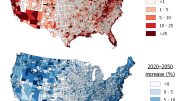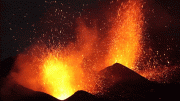
A new study provides the first global assessment of human-induced alterations to natural floodplains, highlighting a significant loss over 27 years, and offering insights to restore and conserve these crucial ecosystems. Collaborative efforts, utilizing satellite data and geospatial analytics, underscore the urgent need for informed development strategies to mitigate flood risks and preserve biodiversity hotspots in these regions.
New research uncovers human destruction of global floodplains.
A study by a hydrologist from the University of Texas at Arlington, published in the journal Scientific Data, offers an unprecedented global assessment of the human impact on natural floodplains. This research can inform future development strategies, aiming to rehabilitate and protect essential floodplain ecosystems, which are fundamental for wildlife, water purity, and minimizing flood risk for people.
Adnan Rajib, a UT Arlington assistant professor in the Department of Civil Engineering, was the lead author on the study. His doctoral student, Qianjin Zheng, played a significant role in developing the research.
U.S. Environmental Protection Agency (EPA) scientists Charles Lane, Heather Golden, and Jay Christensen; Itohaosa Isibor of Texas A&M University-Kingsville; and Kris Johnson of The Nature Conservancy collaborated on the study. The work was funded through NASA and the National Science Foundation.
“The bottom line is that the world is at greater flood risk than what we realized, especially considering what effect human development has had on floodplains,” Rajib said. “In 27 years, between 1992 and 2019, the world has lost a dramatic 600,000 square kilometers of floodplains due to human disturbances, which include infrastructure development, industry and business construction and expansion of agriculture.”
The team used satellite remote sensing data and geospatial analytics in studying 520 major river basins of the world, discovering previously unknown spatial patterns and trends of human floodplain alterations.
“Mapping the world’s floodplains is relatively new. While there is increasing awareness to map floodplains accurately and understand flood risks, an attempt to map human disturbances in those floodplains at a global scale never existed,” said Rajib, who also is the director of the UT Arlington Hydrology and Hydroinformatics Innovation Lab. “It’s been done in smaller regions around the world and certainly in the United States and Europe, but not in data-poor regions of the world.”
The study concludes that wetland habitats are in danger and that one-third of the total global loss of floodplain wetlands occurred in North America. Rajib said the magnitude of risk for floodplains is much larger than what was previously understood. He and the team examined satellite pictures of those floodplain areas taken over the past 27 years.
“We wanted to look at floodplains at the neighborhood level,” Zheng said. “We wanted to see the impact of development on someone who lives adjacent to or near a floodplain. Some of the changes in these pictures are good, like when trees are planted or parks are built. But many of the pictures reveal disturbing outcomes. For instance, we saw a dramatic increase in the development of parking lots or the construction of buildings without adequate stormwater runoff allowances.”
Johnson, a co-author on the paper, said that “worldwide, floodplains are biodiversity hotspots that also provide a wide range of ecosystem services for people. We hope this study sheds light on this critical habitat we’re losing as well as ways in which we can reverse the trend.”
Melanie Sattler, chair and professor of the Department of Civil Engineering, said this study should give planners a vital tool to reduce flood risks for people.
“Rajib’s work can be our lens to help guide future development in order to decrease susceptibility to floods in a changing climate,” Sattler said. “And, in some cases, we hope this study can help us correct mistakes we’ve made through past development decisions.”
Reference: “Human alterations of the global floodplains 1992–2019” by Adnan Rajib, Qianjin Zheng, Charles R. Lane, Heather E. Golden, Jay R. Christensen, Itohaosa I. Isibor and Kris Johnson, 28 July 2023, Scientific Data.
DOI: 10.1038/s41597-023-02382-x








If you think Earth minus human for a moment, you will realise human is causing planet inside out and atmosphere upside down.